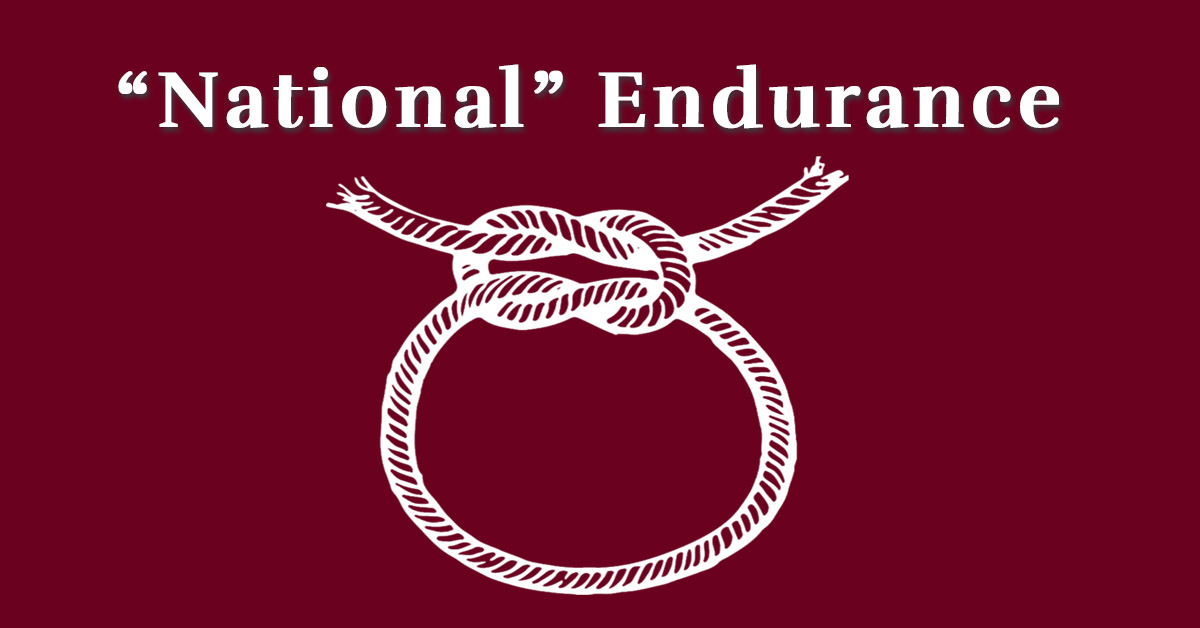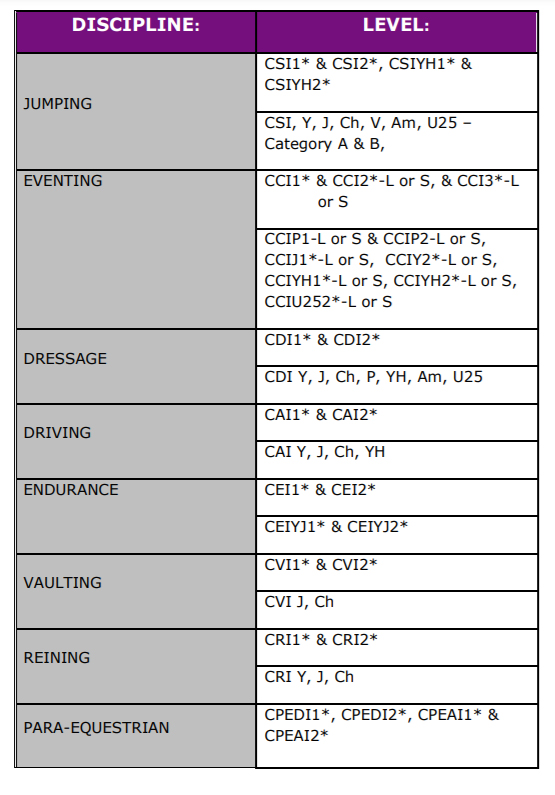Well, that UAE suspension seemed over in a flash, didn’t it? It has been business as usual at the epicentre of winter endurance from January 1 ‒ the UAE is packing loads into the next three months, racing four days out of seven.
Its first feature 120km race of 2021, the Expo Cup CEN, saw the usual pitiful completion rate: 44 finishers, 87 vetgate eliminations and 11 of those mysterious “failures to complete” (FTCs.)
Riders were drawn from 24 nations for that opening meet which ran under national rules. All perfectly legit, because demanding endurance events can count as “national” even when they would be of Olympic standard, if endurance was an Olympic sport.
Worryingly, too, so far this year the longer races have not been livestreamed. There could be Covid-related reasons for standing down the camera crews (though no one else seems too worried about social distancing) but equally the wish to reduce public scrutiny may now seem preferable to ego-feeding.
When the UAE federation (EEF) was briefly suspended from mid-March 2015, this only inconvenienced the few Emiratis active in Europe during the summer. Second time round, the FEI tried stronger medicine: at the end of September 2020 it suspended the EEF in endurance for six months ‒ which could have wiped out its whole winter season ‒ and EEF everything-else for three months.
This suspension was not due to the desert sport’s general awfulness but because, specifically, the UAE ran two prestigious 160-km rides in January and February 2020 as CENs (national rides) while including a much larger international entry than FEI member countries are permitted at a “national” event. The FEI alleged the UAE did this to avoid applying FEI rules .
But the sanction was not as impactful as intended. In November the Court of Arbitration for Sport (CAS) halved the endurance-specific suspension; the UAE was back in time for its highest-profile rides.
We don’t have CAS’s detailed reasoning yet, but CAS clearly decided EEF was in the wrong. It deemed the sanctions disproportionate, though if the EEF had been in the right the suspension and fines would have been quashed entirely.
The new winter calendar (January 14 update) shows the UAE still running most longer rides as CENs. Excluding novice qualifiers and cancellations, there are 40 races of 100km and over. Only 10 of that 40 are slated to run under FEI rules, none of them given fancy names like the rest.
So most fixtures will continue to evade FEI jurisdiction, anti-doping process and transparency over fatalities and rest periods for those needing invasive treatments. Given that many riders still seem happy to risk riding a chemically-enhanced horse, this is as dangerous as it is demoralising. Then again, the likelihood of your horse being sampled in the UAE is zilch, so why worry?
As of January 19, 477 UAE endurance horses have been FEI-registered for 2021, compared with 6,000-7,000 in a normal year. The EEF hasn’t had a chance to process all its FEI registrations yet, but I’d be surprised if numbers ramp up to previous levels. With the UAE 2021 calendar heavily weighted towards CENs, you only really to be FEI registered if aiming for the world championship in May.
How the “Minor event” loophole works
How is it still feasible, after the CAS decision, to run CENs bursting with foreign nationals? It is because of a loophole in “Minor” International event (CIM) classification that, bafflingly, has not been closed.
I’m told CIM status will be reviewed this year, having been deferred because of pandemic-related priorities last year. If it doesn’t make the next round of consultations any re-assessment of CIM status might not take effect till 2023, giving the UAE two more seasons to dodge the bullet.
For years the CIM loophole has enabled all CEN rides to be “internationals” in all but name. Officially any competition with N (national) status in a FEI member country is limited to riders from four countries and/or up to 15 genuinely domiciled foreign nationals; but these limits are waived if the event is designated “Minor”, as a CIM – Concours International Mineur.
And somehow it’s been engineered that all but a handful of UAE rides count as CIMs, despite their huge purses, global participation and TV presence. Frankly, it will be “news” only when only 13 or 14 flags are flown at a routine desert ride, never mind four.
In FEI jumping, dressage and eventing there are five levels of star-rating. Their CIMs tend to be modest contests around 1* and 2*; in the Olympic disciplines, 3*,4* and 5* cannot count as CIMs and so must run under FEI rules:
But FEI endurance uses just three levels of star rating. Its middle 120km/ 2* level has ended up counting as “Minor” despite 120km being the sport’s second-most challenging single-day distance.
This “Minor” 120km distance decides, for instance, very Major things like the FEI youth and young horse world endurance championships and is the last stepping stone towards a 160km. This “Minor” distance would even have decided the 2018 World Equestrian Games, had that ill-fated ride completed at Tryon.
In terms of athletic challenge, a 120-km race equates to 4* jumping, dressage and eventing ‒ the approximate standard of the Olympic Games. (This is not the same as saying the riders you see crashing about the desert are capable of Olympic something-else ‒ I am merely comparing the relative sporting demands.)
No doubt this huge concession was slipped into FEI rules way back when the UAE had more influence on the FEI endurance committee and the rest of the world wasn’t paying attention.
Why did the FEI only recently get round to sanctioning the UAE over CEN breaches? UAE “national races” have, after all, welcomed legions of foreign visitors for yonks.
The answer is simple. Until January 2020, the UAE had shrewdly avoided running any CENs at 160km level, as a 160km championship could hardly be passed off as a Minor event. But in January 2020, tough new FEI rules came into effect, which the UAE had lobbied against. The headlining 160km Sheikh Mohammed and 160km President’s Cups would have to apply them if run, as usual, as CEIs, but the UAE took a chance and ran them as CENs, each with a vast foreign line-up. Finally, the FEI had straightforward, legal grounds to act against a faux “national” ride.
The absence of legal grounds enabling the FEI to have already taken a tougher stance over 120km CENs is of the FEI’s own making. When I began covering the endurance scandals in 2012, many officials told me that plugging the CIM loophole was critical. Eight years on it’s still there: self-defeating and perplexing. All that angst for Mark Samuel and the FEI’s temporary committee in creating the new endurance rule book, and still the UAE (and anyone else) can legitimately skirt round it.
How some headlining events opted for a downgrade
In the ‘noughties, more UAE 80km and 120km rides ran under FEI rules than now. But with increasing pressure to abide by FEI rules, they were steadily demoted.
Take, for instance, the National Day 120km at Al Wathba (named after an important event in UAE history, not its FEI status.) In 2011, National Day was still a CEI. One horse was allegedly swapped for another mid-ride. Unfortunately a person with clear picture evidence lost their nerve about submitting it to the FEI’s integrity team, so nothing was done, but I am sure alarm bells rang in Abu Dhabi.
Also at that same ride, a trainer suspended for a steroids offence was pictured on the prize-winner’s podium in a local newspaper and ended up being further sanctioned by the FEI for unauthorised presence on the field of play.
After this there was a notable increase in the demotion of headlining events. From 2012 National Day became a CEN.
Some rides, like the 120km Al Reef Cup, have flip-flopped between CEI and CEN status. In 2015 it was a CEN, leaving the FEI unable to intervene directly over the circumstances leading to Splitters Creek Bundy’s two broken forelegs.
In February 2016, there was again nothing the FEI could do about another CEN which used to be a CEI, the 120km Sheikh Zayed Bin Mansoor Al Nahyan Junior & Young Riders Endurance Cup. Numerous grooms and supporters ran into the piste to bully home five exhausted horses. It was left to the UAE to “suspend” itself for a week and fine the trainers. Footage of that diabolical spectacle can be seen here:
The Gamilati Cup is a 120km mares’ race, also a CEI until recent years. Without FEI checks, races for mares are always crazy fast, with three horses reported dead in Gamilati 2019. After that, even the normally reticent Endurance GB issued a statement that running CENs with a “very international flavour” gives “grave concerns that such rides do not carry the level of scrutiny, welfare safeguards or sanctions that are in place at FEI CEI International level competition.”
The UAE’s third most prestigious race, after its two 160s, is the 120km Crown Prince Cup. In March 2016 it was slated as the test ride for the 2016 FEI world championship. Organisers refused to change some vetting parameters so the FEI disaffiliated it, and the Crown Prince went ahead as a CEN for riders from 25 nations. CEI status was reinstated in 2017, but in March 2020 the 120km Crown Prince ran again as a CEN ‒ a “Minor” event with 400 starters from 20 countries.
Finally, best wishes to Christina Abu-Dayyeh, the new FEI endurance director. Though with so much of the key winter activity being non-FEI, she won’t be flexing her muscles just yet.


